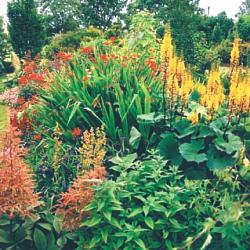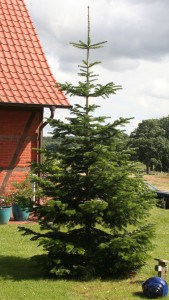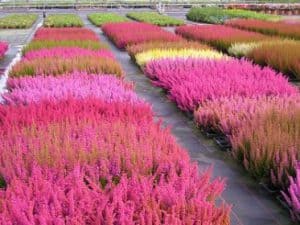The most important mycorrhizal fungus groups and their partner plants.
| Endomycorrhiza
Herbaceous plants |
 Endomycorrhizae (a.k.a. arbuscular mycorrhizal fungi) penetrate the roots of herbaceous plants and many broadleaved trees and build structures there that are necessary for symbiosis. Endomycorrhizae are microscopically small and cannot be seen with the naked eye. Endomycorrhizae (a.k.a. arbuscular mycorrhizal fungi) penetrate the roots of herbaceous plants and many broadleaved trees and build structures there that are necessary for symbiosis. Endomycorrhizae are microscopically small and cannot be seen with the naked eye. |
| Ectomykorrhiza
Many types of trees, |
 Ectomycorrhizae are present in many types of trees, particularly in conifers. The fungi form a latticework of hyphae around the tree roots. Ectomycorrhizal fungi form fruit bodies in autumn: the mushrooms we eat, which imperceptibly provide nutrients to trees from under the ground. Ectomycorrhizae are present in many types of trees, particularly in conifers. The fungi form a latticework of hyphae around the tree roots. Ectomycorrhizal fungi form fruit bodies in autumn: the mushrooms we eat, which imperceptibly provide nutrients to trees from under the ground. |
| Ericoide mycorrhiza
The plant family Ericaceae |
 This mycorrhiza is only present in members of the plant family Ericaceae. Rhododendrons, azaleas, blueberries, Calluna and Erica are the partners for this fungus. This mycorrhiza is only present in members of the plant family Ericaceae. Rhododendrons, azaleas, blueberries, Calluna and Erica are the partners for this fungus. |
| Special mycorrhiza | Orchids |
| No mycorrhiza | Plants in the goosefoot family (e.g. turnips, spinach), Plants in the cabbage family (brassicaceae), Plants in the Cyperaceae family. |


